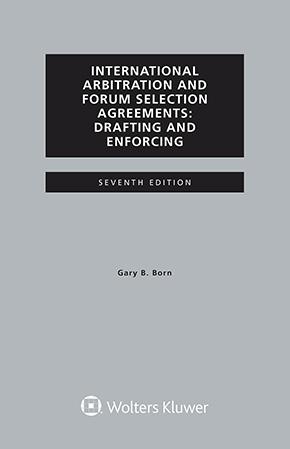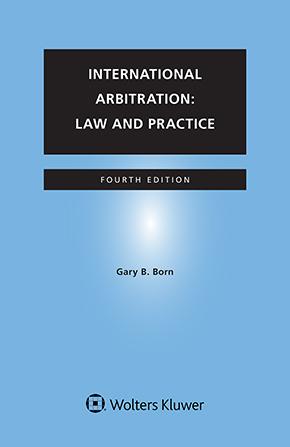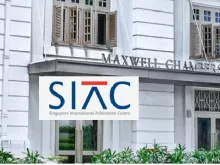2025 Australian Arbitration Week Recap: From Alliance to Arbitration: Navigating the Spectrum of Disputes in the Context of Evolving Global Security Frameworks, Increased Defence Spending, and the AUKUS Alliance
October 18, 2025
Australia's defence sector is at a critical inflection point. In the wake of rising global conflicts, Australia is strengthening its strategic alliances through the Australia-United Kingdom-United States trilateral security partnership ("AUKUS alliance") and beyond, while increasing defence spending and harnessing technological innovation. This surge in activity is likely to usher in a new wave of legal and regulatory complexity, in which increasingly complex and multi-jurisdictional disputes are inevitable.
Against this backdrop, on 14 October 2025, a distinguished panel convened at the Australian Arbitration Week to discuss the spectrum of potential disputes in the wake of evolving global security frameworks and technology development. The panel was hosted by DLA Piper and moderated by Gigi Lockhart (Senior Associate, DLA Piper) with the panellists consisting of:
Francesca Rush (Chief Counsel, Australian Department of Defence);
James Couche (Vice President of Legal and Contracts, Thales);
Gitanjali Bajaj (Partner, DLA Piper); and
John Gallagher (Partner, DLA Piper).
Defence Strategic Review: Redefining Modern Warfare
The panel opened with a discussion of the Australian Defence Strategic Review 2023 (“DSR”) and the AUKUS alliance, which together mark a significant pivot in Australia's defence posture. Ms Rush presented a sobering picture of large-scale military build-up in the Asia-Pacific region, heightening competition between the United States and China and escalating tensions across the globe, emphasising the need for Australia to develop advanced defence capabilities to respond to increasingly technologically complex threats. Ms Rush contextualised the AUKUS Pillar 1 (which involves the supply and delivery of eight nuclear-powered conventional attack submarines for Australia by the 2040s) and Pillar 2 (which serves as a platform for advanced technology cooperation) within the broader context of the 2024 National Defence Strategy (“NDS”) and the 2024 Integrated Investment Program (“IIP”). She highlighted that these key national frameworks are not only reshaping capability development but are also redefining defence as an emerging asset class. Ms Rush further stressed that in circumstances where Australia can no longer rely on its geography for protection, the IIP has set out a generational uplift in targeted investments in undersea warfare, long-range missiles, advanced cyber, and space defence capabilities.
Industry Response: Capability, Competition and Collaboration
Mr Couche provided a commercial lens on how defence contractors, like Thales, are meeting the capability gaps and strategic interests identified by the DSR. He emphasised the importance of adapting to the needs of Australia’s defence strategies, highlighting one of the key challenges as being the arrival of smart, agile technology start-ups into the arena, which are increasingly incorporating artificial intelligence (“AI”) into legacy platforms. Mr Couche further noted the focus is on four key issues, being:
how to combine physical and digital sciences;
how to deploy new technologies in practice;
the constraints of embeddability of the technology; and
how to protect that technology from cyber-attacks.
Mr Gallagher expanded on the transactional implications of this shift, noting the increasing diversity of counterparties and the complexity of structuring cross-border agreements. He also addressed the allocation of risk and responsibility, particularly in projects involving sovereign entities and sensitive technologies. In this context, “sensitive technologies” refer to advanced, high-risk and often dual use technologies that are central to defence and national security procurement and projects. These technologies are subject to highly strict regulatory controls, particularly because they involve sovereign entities. Further, Mr Gallagher noted that defence transactions are less predictable than standard commercial contracts, and that this shift introduces structural complexity requiring legal teams to navigate not just commercial terms, but also intergovernmental protocols, national security needs and political unpredictability. As such, he emphasised the need to be agile, particularly in defence related government-to-government transactions.
Dispute Resolution in Defence: The Case for Arbitration
Turning to a discussion on dispute resolution, Ms Bajaj emphasised that the defence sector has undergone a revolution, rapidly relaying a knock-on impact on all other sectors. By way of example, she explained that an investment in the defence sector typically goes hand in hand with mega-infrastructure projects, which have traditionally been a frequent source of disputes. Beyond the predicted overall rise in disputes, Ms Bajaj's remarks points to a broader strategic recalibration in how disputes are anticipated and managed. The convergence of defence investment with various sectors introduces hybrid legal frameworks where public procurement, international arbitration and environmental regulation intersect.
Expanding upon Mr Gallagher’s comments on the new and innovative changes to the structure of defence related public procurement projects, she outlined that increased complexity of multi-partite arrangements, involving several multinationals, will likely result in an increase in disputes. Leaving no sector unturned, Ms Bajaj further noted that the net-zero emissions targets on the horizon for the Australian defence sector will also result in increased investment in green technology, further raising the prospect of complex disputes involving sensitive technologies.
From a practical perspective, Ms Rush observed that arbitration tends to be the preferred method of resolving defence related disputes, highlighting however that only the most serious disputes will usually result in actual arbitration proceedings. Ms Rush emphasised that, in her experience, institutional arbitration seated in Australia and administered by the Australian Centre for International Commercial Arbitration (ACICA) is generally the preferred method of dispute resolution. However, when dealing with international players, arbitration may instead be seated in London or Singapore and administered by an international institution such as the London Court of International Arbitration (LCIA) or the Singapore International Arbitration Centre (SIAC). Ms Rush further explained that one of the key benefits of arbitration is that it provides the framework to ensure the capability is delivered, given that delivery must continue irrespective of whether there is a dispute on foot. She also noted that the sensitive nature of the expert evidence exchanged in the context of defence-related disputes - potentially relating to capabilities or constraints of Australia’s defence strategies - increases the need for confidential arbitration proceedings.
Adding to this discussion, Mr Couche noted that defence contractors such as Thales seek mechanisms to resolve disputes as quickly as possible, with confidentiality being of key importance, particularly in matters of sensitive technology or national security. He agreed that minimising the impact of the delivery to the customer is a key priority in the context of a dispute. Drawing on his experience, he also noted that defence contractors often prefer methods such as standstill deeds to allow time to renegotiate terms in a dispute, rather than running a dispute through the normal process.
Closing Reflections: Technology, Innovation and National Security
In addition to technological transformation, the panel's reflections implicitly point to a broader geopolitical shift. As Australia strengthens its strategic alliances through AUKUS and expands its defence footprint across the Indo-Pacific, arbitration is poised to play a critical role in managing sovereign risk, navigating export controls, and resolving disputes arising from intergovernmental agreements. This includes not only commercial disputes, but also those involving state-to-state cooperation, classified technologies, and cross-border enforcement of awards, all areas where traditional litigation may be impractical or diplomatically sensitive.
Finally, the panel closed with a forward-looking discussion on emerging technologies, with particular focus on the impact of AI on the Australian defence sector. Mr Couche observed that technology has changed the terrain of the battlefield; while previously vehicles would be designed to encounter mines or exploding devices, increasingly the threat is coming from drones carrying explosives above the vehicle. Accordingly, governments increasingly work with small and medium-sized enterprises to develop the capacity to respond to the changing nature of the threat. He noted that a major defence contractor like Thales spends €4 billion per year developing key innovation assets around AI and cybersecurity, indicating that other key players in the Australian defence industry are likely doing the same to further enhance their capabilities.
As global defence forces continue to invest billions in AI, Australian firms are expected to increasingly engage in international joint ventures, licensing arrangements, and research and development pathways and partnerships. These relationships often span jurisdictions, making international arbitration a preferred mechanism for resolving issues confidentially. The integration of AI into defence systems also raises questions around compliance, accountability, and liability. Disputes may arise over algorithmic decision-making, data breaches, or export control-areas where arbitration can offer tailored, expert-led resolution outside traditional courts.
By way of final reflection, the panel observed that, while the spectrum of disputes relating to the Australian defence sector is evolving, so too are the potential opportunities. Australia's legal and defence sectors have the opportunity to shape global norms around AI and cybersecurity in arbitration, contributing to rulemaking, ethical standards, and procedural innovation.
More coverage from Australian Arbitration Week is available here.
You may also like











